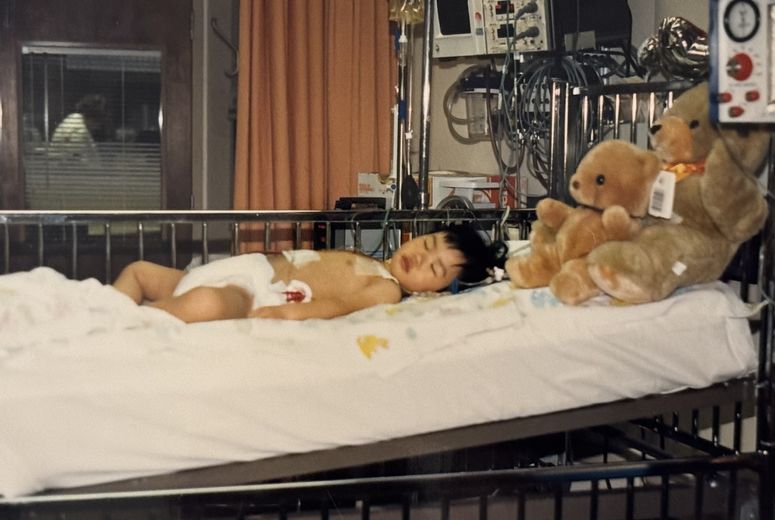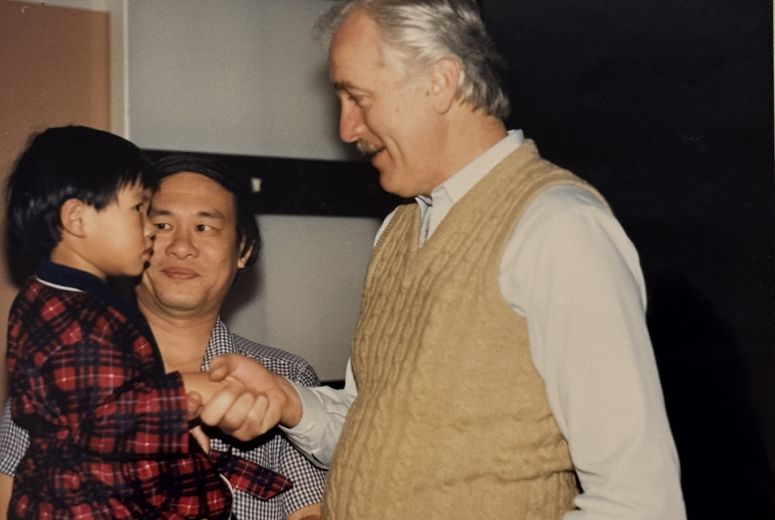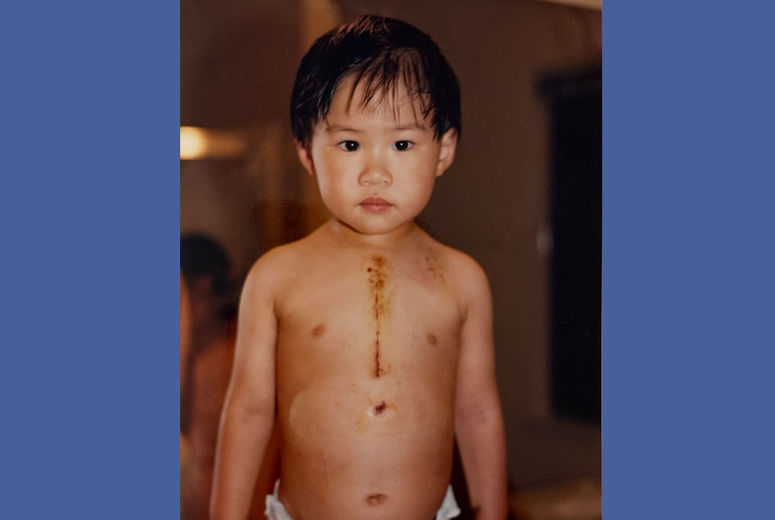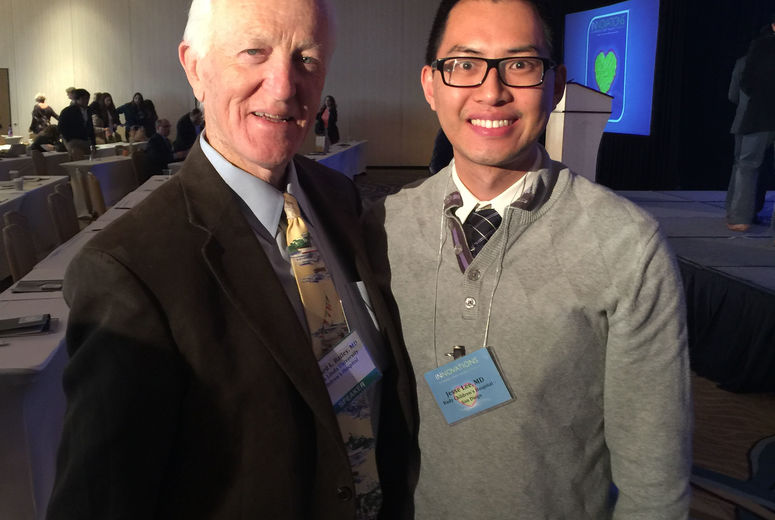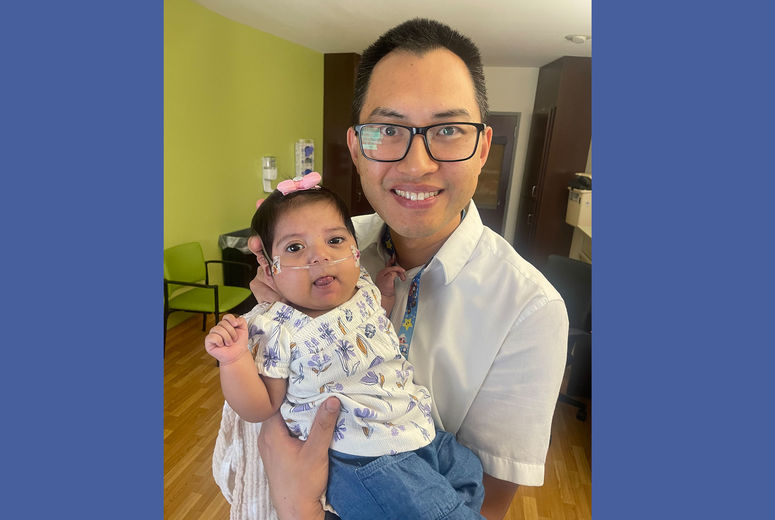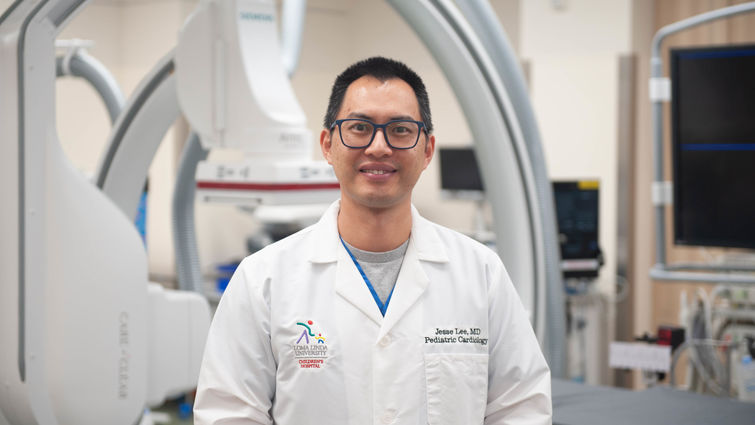
In honor of February Heart Month, we share the story of Dr. Jesse Lee, a 40-year-old pediatric cardiologist who himself was a cardiology patient as a young child. Dr. Leonard Bailey, Loma Linda University Health’s late pioneering infant heart transplant surgeon, performed Lee’s lifesaving surgery. Now one of 10 pediatric cardiologists in his division, Dr. Lee helps children who are facing what he once did. Here is his story in his own words.
I was born with the heart condition Tetralogy of Fallot. Dr. Bailey operated on me in 1987, when I was two years old. I still have a scar, but all I remember from those days are from looking at pictures in my baby album. My mom even got Dr. Bailey to sign a page in my baby book.
My parents didn’t know I had congenital heart disease before I was born. That kind of technology to examine fetal life didn’t exist back then. Someone noticed a murmur, told my mom, and they whisked me away for an X-ray.
Some babies with Tetralogy of Fallot need to be operated on at 4 to 6 months of age. Fortunately I had a milder form and got my repair just shy of age two. Since then I’ve been doing well. I’ve never needed additional heart surgeries. But I always made it a point that whenever I could see Dr. Bailey to go up to him and say “hi.”
There are actually a lot of dentists in my family, but I had congenital heart disease as a child, and I found teeth to be boring. So I went into medicine.
I was on an OB/GYN rotation in medical school, and every time I saw the birth of a baby, I wanted to follow the baby. Pediatrics was calling.
Congenital heart disease is an interesting thing. It’s the most common congenital birth defect. One percent of babies have it. Being able to help a child with heart disease can potentially set them up for the future to have a normal life.
I try to have a good sense of reading the room when talking to concerned patients and their parents. Occasionally I’ll reveal to them that I had something similar as a child. Some teenagers can really connect with me on that, and some say they want to become a cardiologist or a surgeon in the future, too.
I treat anyone from premature babies that are born at 24 weeks, 700 grams, all the way up to those who are 18 or 21 years old and are ready to transition to see an adult cardiologist.
I have a unique perspective on cardiology because my primary training is to perform minimally invasive procedures, so those that are mostly catheter-based. I love doing that, but I’ve also spent some time training in electrophysiology and arrythmia management. I’m basically both a plumber and an electrician.
I enjoy knowing I can make a real difference in somebody’s life. It sets them up for decades of success and potentially to be able to live a healthy and normal life for a long time. It’s probably the most rewarding thing: being able to see a baby that you treated, and you follow them and suddenly see them become teenagers and adults.
I was born and bred here. I grew up in Loma Linda. This university has been part of my whole life. My goal is to stay here and leave a legacy like the people who came before me, like Dr. Bailey, to really help this community.
—as told to Ansel Oliver

